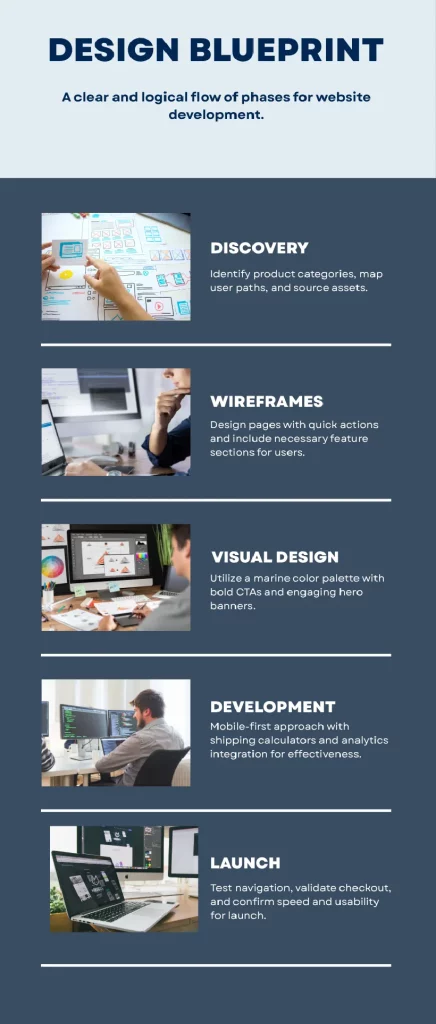Your Practical Guide to Marine Web Design
for DTC Brands


Do you want a Marine DTC Web Design That Sells?
You know the marine eCommerce market is getting crowded fast. Whether you’re selling GPS systems, marine apparel, parts, or safety gear, online shoppers expect nothing less than a sleek, intuitive experience. And if your website doesn’t deliver, they hit the back button faster than you can load Google.
This guide is built for marine DTC business owners, eCommerce managers, and marketing leads—anyone responsible for bringing boating products to the web. We dive into how specialized web design can help you nail first impressions, reduce bounce, and boost sales.
⚓ Core Focus:
- Who you are and what your customers need
- Your main web pain points—and how to fix them
- Why a marine-first design matters
- Phase-by-phase solutions to reduce friction
- How Digital Deckhand builds websites that convert
Web Design is Your Best Digital Crew
In the marine DTC industry, your website is your showroom. But unlike general markets, boaters expect:
- Rugged visuals and compelling storytelling
- Easy-to-digest specs (e.g., “Will this anchor fit my bow?”)
- Fast mobile browsing on docks or marina Wi-Fi
A template may technically work—but it won’t help you stand out or build trust. You need a site that operates like your product: reliable, precise, and powerfully designed.
Key Features of High-Converting Marine E-Commerce Websites
Building a marine eCommerce site that not only looks good but converts well starts with understanding your customers’ pain points—and solving them through smart web design. Here are the features your site must have and why they matter to your buyers:
- Optimized Navigation and Smart Search Filters
Pain Point: “I can’t find the right part in this sea of products.”
Solution: Use intuitive categories, advanced filtering by spec (e.g., brand, fit, size), and keyword-based smart search. Boaters often shop for specific parts—they should find them fast.
- Clean, Informative Product Pages
Pain Point: “What does ‘12mm galvanized shackle’ even mean?”
Solution: Structure product pages with collapsible tabs, spec charts, and compatibility tools. Add lifestyle photos showing parts in use to make technical products more relatable.
✅ Pro tip: Include comparison charts or “Pairs well with” sections to boost AOV (average order value).
- Speed and Mobile Optimization
Pain Point: “If this page doesn’t load on the launch ramp, I’m gone.”
Solution: Compress images, reduce unused scripts, and use a CDN for lightning-fast load times, especially on mobile.
Pain Point: “Zooming everywhere on the product page? No thanks.”
Solution: Design for mobile-first experiences: swipeable galleries, sticky “Buy Now” buttons, and tap-friendly filters.
- Seamless Checkout Experience
Pain Point: “Why do I get an error when I ship to Alaska?”
Solution: Use dynamic shipping logic, address validation, and auto-fill forms to streamline checkout. Avoid forcing account creation and keep steps minimal.
- Smart CTAs and Conversion Boosters
Pain Point: “What now?”
Solution: Use data-backed CTAs like “Add to Tackle Box” or “Ready for the Waves?” to speak your buyer’s language. Highlight urgency and scarcity (e.g., “Low in Stock”).
- Customer Support Where They Need It
Pain Point: “I need help choosing a part for my Mercury 115.”
Solution: Add live chat, FAQs, help center links, and even visual guides. When customers feel supported, they’re more likely to convert.
- Trust Signals That Reassure Boaters
Pain Point: “Are these boaters legit?”
Solution: Display product reviews, verified buyer photos, warranty badges, SSL seals, and secure payment logos. Social proof and trust elements build confidence fast.
Why a Good Web Design Matters?
Marine buyers are often shopping from docks, boats, or the back of a pickup truck. They need speed, clarity, and trust. If your site doesn’t meet those needs, they bounce. These features don’t just make your site look good—they keep boaters engaged and buying.
Understanding First- Marine Web Design
Marine buyers aren’t casual shoppers—they’re knowledgeable testers and spec-focusers. Your design needs to:
- Reflect your brand identity and lifestyle (sea, sail, durability)
- Showcase real use-case imagery (on-water shots, parts in action)
- Present information clearly—specs, fit guides, instructions
When you say “built for mariners,” your design must prove it.
Phase-by-Phase Web Design Blueprint


Phase 1: Discovery & Sitemap
- Map user paths: rims → parts → cart → checkout
- Identify product categories: anchor gear, electronics, dock accessories
- Source assets: logos, fonts, product images, testimonials
Phase 2: Wireframes for Buyer Flow
- Design pages with quick actions: “Check Specs,” “Add to Cart,” “Ask a Question”
- Include feature sections: compatibility guides, measurement charts
Phase 3: Visual Design Mockups
- Use marine color palettes, bold CTA buttons
- Incorporate hero banners (e.g., “Spring Boating Promotion”)
- Apply trust elements: ratings, warranty badges, payment logos
Phase 4: Responsive Build & Development
- Ensure mobile-first deployment
- Implement real-time shipping calculators and address validation
- Integrate Google Analytics, Hotjar heatmaps, and SEO best practices
Phase 5: Testing & Launch
- Test navigation ease on desktop and mobile
- Validate checkout process and form flows
- Confirm page speed, form responses, and mobile usability
Supporting UX & Conversion Strategies
- Clear Navigation & Filters
Menu headings like “Anchors,” “Docking,” “Fishing Gear”
Filters: boat type, material, price - Sticky CTAs
Add-to-cart buttons visible during scroll - Product Bundles & Upsells
Use “Captain Packs” or maintenance kits grouped by gear type - Social Proof & UGC
Create “From the Captains” reviews and hero images - Trust & Guarantee Signals
Highlight bulk shipping options, return windows, certifications - Content Zones for SEO
Add product guides, specs, videos, and FAQs
Integrating Paid Ads & Retargeting
If you’re also running Google Ads or Facebook retargeting, your web design needs to match that strategy:
- Landing pages built for keyword alignment (“Boat Cleaners Shipping to Florida”)
- Seamless click-to-cart flow
- Dynamic retargeting pop-ups triggered on exit intent or abandoned cart
Learn more: How to Use Retargeting Ads for Marine Marketing
Common Mistakes & How to Avoid Them
| Mistake | Impact | Fix |
| Generic templates | Low trust | Invest in marine-first design |
| Cluttered homepage | High bounce | Simplify visible categories |
| Hidden shipping info | Cart drop | Show dynamic shipping options early |
| No mobile CTA | Missed conversions | Implement sticky Buy Now |
How Digital Deckhand Supports Marine Brands
Frequently Asked Questions (FAQs)
1. What is Marine DTC Ecommerce Web Design?
Marine DTC ecommerce web design refers to the process of designing websites specifically for marine brands that sell directly to consumers (DTC). These websites are tailored to showcase marine products, enhance shopping experience, and drive conversions.
2. Why is a custom web design important for marine DTC brands?
A custom marine ecommerce website ensures that your brand’s uniqueness, product visuals, and usability are optimized for boaters, sailors, and marine enthusiasts. It also boosts trust, SEO performance, and ultimately—sales.
3. What key features should a high-converting marine ecommerce site include?
- Mobile-first responsive design
- Clear product navigation and filters
- Lifestyle and product imagery
- Fast load times
- Easy checkout and payment options
- SEO and CRO-friendly structure
4. How can web design affect conversions for marine ecommerce stores?
Poor UX, slow speeds, or confusing navigation can turn away buyers. Optimized web design directly improves conversions by reducing friction, improving trust, and encouraging action.
5. Can I integrate inventory and shipping systems into my marine ecommerce site?
Yes. With the right platform and development approach, you can integrate real-time inventory management, logistics systems, and shipping APIs to streamline your operations.
6. What platforms are best for building marine ecommerce websites?
Shopify, WooCommerce, BigCommerce, and Miva are popular for marine DTC brands. The choice depends on your catalog size, integration needs, and future scalability.
7. How long does it take to build a marine ecommerce website?
Depending on complexity, it can take anywhere from 4 to 12 weeks. This includes planning, wireframes, design, development, testing, and launch.
8. How does Digital Deckhand help marine DTC brands with ecommerce web design?
Digital Deckhand offers full-service marine ecommerce website design tailored for DTC brands—ensuring your online store is optimized for both performance and conversions. They also help with CRO, SEO, and paid ads to drive growth.
Your custom marine website is only as good as the team behind it. At Digital Deckhand, we offer:
- Full-service Marine DTC Web Design with built-in CRO & SEO
- Mobile-first, conversion-driven storytelling for boating brands
- Ongoing support: design updates, performance monitoring, hosting
- Seamless integration with paid advertising strategies
- Access to our ad & organic marketing specialists
👉 Ready to upgrade? Visit our Web Design Service Page to start your discovery call.
Start Building a High‑Converting Website for Your Boating Brand
You don’t get a second chance to make a first impression. For marine DTC brands, your website is that first impression—and it must align with your product’s quality, performance, and brand promise.
The best boats chart course. The best websites do too.
⚓ Need help? We’re ready to build your website and craft a seamless user experience that converts visitors into loyal boaters.
